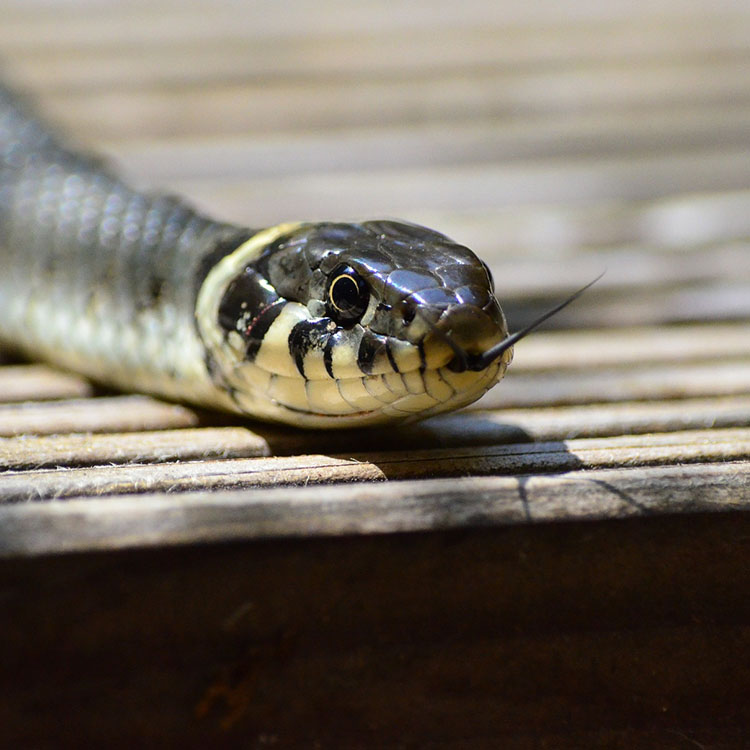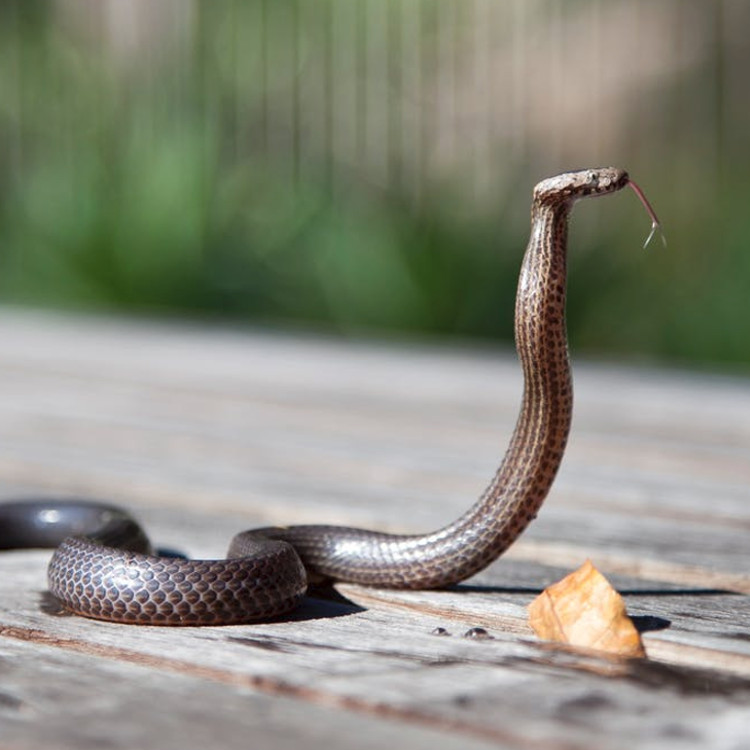Snake Poop Photos
Snake droppings are not as harmful as other wildlife species waste, but it is not something to inspect, play with, or allow household pests to consume. The feces of a snake can contain bones, teeth, and other hard, calcified parts of their prey, due to the fact that snakes love to eat rodents and other small mammals.

Snake Eating and Digestion
Snakes require a lot of energy to digest their food. Humans mastecate, or chew their few to break it down so that stomach acid and the lining of the stomach can absorb nurtrients and filter out what is waste, what can be used and turned into waste, and what could potenitally be harmful to the human body. Snakes, however, swallow their prey whole and must relax into a state of near paralysis to begin the digestion process. You can see when a snake has just had a meal because they are bloated near the base of their heads with their prey.
Once a snake has digested its food, both color waste and kidney waste from a snake will exit near the tail on a part of their body that is like the rear end of a human. Unlike humans, it is not uncommon for snakes in the wild to continue to move as their waste is released.

Distinguishing Snake Feces from Other Feces
Snake poop can be confused with the droppings of some bird species. This is because of the prepensity for birds to prey on rodents as well. However, bird waste will almost always contain some white coloration, whereas snakes will not.
Within the animal kingdom, there are a large variety of snakes, and their diets can vary as well. Two snakes that are from different species, but prey on the same animals, may produce different-looking waste based on their size and how long it has been since they last fed. It is not possible to determine snake species based on size and coloration of the snake poop without chemical testing.
Disposing of Snake Feces
As with any other animal feces you find, it is best to use protective gear to remove it. Trained technicians will wear air masks, cover their arms and legs, and use eye-safety goggle before handling the snake's waste. While the risk of disease from a snake's poop is less than that of, say bats or raccoons, it is always better to be safe than sorry when you are handling wild animal droppings. Double-bag the feces once it is collected and sanitize the area with 1 part bleach and 10 parts water. If the snake poop is found in the lawn, remove the majority of it and use a hose and a much weaker bleach mixture to sanitize it so as not to destroy your green grass or damage the soil.
